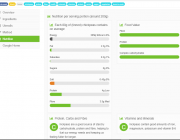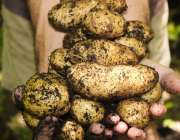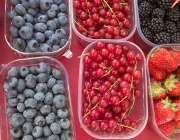NBite 29th April 2017 diet and healthy weight-loss part 2
NBite 29th April 2017

Combine a good diet with exercise to see real benefits.
Diet and healthy weight-loss part 2
Welcome to the second part of my NBite article on diet and weight loss.
This week I'll talk about ways we can make sustainable and long-term changes to our diets and lifestyles, not only to provide real help with healthy weight loss and maintaining a healthy weight but changes that will have many overall health benefits.
As we now know from the first part of this article, just focusing on dieting doesn't work, it's not sustainable in the long term and ultimately isn't good for the body and our general health.The 2 main, general changes that need to be made to achieve long-term health goals, are moving to a healthier, balanced diet and increasing activity levels.
These are long term lifestyle aims that won't happen overnight and will take getting used to, but by making smaller, gradual changes these aims can be achieved.
A balanced diet
The most important and effective change we can make to improve our long-term health is to improve our diets. We have all heard the long-standing advice to eat a balanced diet, but what exactly is a diet that is balanced?
Essentially, it means making sure we eat a variety of foods in the right amounts from each of the main food groups. These are vegetables and fruit, starchy carbohydrates, dairy or dairy alternatives, protein (pulses, fish, meat, eggs) and fats and oils.
We all have our own food likes and dislikes and tend to stick to what we know we like, but expanding the range of foods we eat means we are more likely to get the full range of nutrients that our bodies need to remain in good health.
So when we are making our meals, either on a daily basis or in general throughout the week, its a good habit to get into thinking about the food balance. Making vegetables and fruit along with starchy carbs the main bulk of meals as these are a great source of energy and where we get most of our vitamins, minerals and fibre. Alongside this, try to choose some foods such as pulses, fish, meat and eggs as these are good sources of protein and vitamins and minerals. Dairy foods such as yoghurt and cheese should also make up part of the balanced diet, as these foods are a source of protein and calcium as well as other vitamins. And lastly, choosing good fats and oils such as olive oil, vegetable and rapeseed oils during cooking, as well as dressing, will provide good sources of fatty acids and help our bodies absorb fat-soluble vitamins.
Tips to support a balanced diet
Variety is key
When choosing vegetables and fruit, try to include as many different types and colours as you can, especially dark green leafy veg. Frozen and tinned count as well, but make sure the tinned don't contain any added sugar or salt.
Fruit and veg at their best
When buying fruit and veg, try to go for what's in season at the time, and more locally grown if possible, buying them at that time is when they are at their nutritional best and also when they're cheapest. The cooking method used also makes a big difference to the nutrient levels we get from vegetables.
Unless you're making a soup or stew when you keep the liquid, try to steam or stir fry rather than boil. Microwaving with a touch of water is also a good way of cooking veg, these methods are all quick, so more of the nutrients are retained and also not lost in the water thrown away.
High fibre foods
When choosing starchy carbohydrates, try to go for more wholegrain varieties such as wholemeal bread, wholewheat pasta, wholegrain cereals, brown rice and cook potatoes with their skins on.
Whole grain varieties are broken down in the body more slowly and contain more fibre which helps keep us feeling fuller for longer, they also contain more vitamins and minerals than white, refined varieties as the whole of the grain has been retained.
Homemade is best
We don't always have the time or feel like it, but making meals at home is the best way to control and know exactly what has gone into them. Shop bought ready made products and meals are so processed, commonly containing high levels of sugar, salt, fat, often all three.
Worse than this, they are routinely made up of items that are so far removed from what we and our bodies would know as real ingredients, all so the food manufacturers can make the products for as cheaply as possible, always taste and look the same and last as long as possible before we buy them.
Looking at the food labels when food shopping will help in making healthier choices. More products are displaying coloured traffic light labels on the front of packs these days, especially supermarket own brand products, using these will quickly show if an item is high in sugar, salt or saturated fat.
Another thing to keep in mind is the ingredient list on ready made products, if the list has more than 3-4 ingredients and contains things with chemically sounding names, then its been highly processed.
Meal planning and portion size
Alongside making more meals from scratch at home, planning what meals and healthier snacks to make for the following week will not only help stop extra visits to the local shop for lunch or to the supermarket or takeaway for dinner, it saves time and money as well.
There are lots of meal ideas available online that can be portioned out to be chilled or frozen, or adapted to make a few different meals throughout the week, that way there is always a healthier option available when time is short or we just don't feel like preparing a meal from scratch.
When it comes to portion sizes, whether buying ready made meals or snacks or preparing them at home, how many of us follow the guidelines on packaging or know how much a portion should be for a meal we have made? Over the last 20 years, average product and portion sizes of most supermarket ready meals and snacks have increased by anywhere between 40-60 percent and in some cases of Margherita pizzas, by 100%! It sounds obvious, but when more food is put in front of us, we tend to eat more.
Average plate sizes have also increased over the years and when dishing out meals we tend to try to fill the plate, try to use smaller plates and bowls or to try to aim for a portion size the same as a clenched fist. This works for most people individually, as hand size is relative to your body size, so children will need much smaller portions than adults and any space on bigger plates or bowls can be filled with extra veggies or salad.
Getting active
As I wrote at the start of this article, the second important lifestyle change we can gradually make to achieve our long-term health goals is to increase our activity levels. Not only will being more active help with healthy weight loss and maintaining a healthy weight, it has a host of other benefits for the body, such as:
- Reducing risks of developing heart disease and stroke, by exercising the heart muscle, reducing bad (LDL) cholesterol levels while increasing good (HDL) cholesterol levels and also helps reduce blood pressure.
- Reducing risks of developing type 2 diabetes and can help to manage the condition alongside a healthier diet.
- Reducing risks of developing cancer by up to half
- Helping to reduce stress levels
- Reducing risks of developing depression
- Reducing risks of developing dementia and Alzheimer's
- Improving overall muscle and bone strength
How to get more active
Many people are just not keen on the idea of exercise or maybe used to do more but haven't done any for a while, so the thought of jogging or going to the gym using the equipment or joining an exercise class can just make people anxious and it becomes another barrier to becoming more active.
But it shouldn't feel like that, to be able to stick to regular exercise in the long term it needs to be enjoyable and become just another part of daily life. the most effective way is to start gradually and build up from there.
Get active every day
Try using the car less often for smaller trips like walking to the local shop, taking the dog for a walk, going to the local park with the kids/grandkids or walking them back from school. Other small changes like using the stairs at work instead of the lift or escalator and getting off the bus even a few stops early to and from work will all help make a difference.
Build on positive progress made
As daily activity and confidence levels start to increase, keep the momentum going by working towards the recommended 150 minutes of physical activity throughout the week. As with improving diet variety is the key, trying different activities such as brisk walking, cycling, swimming, or joining a local fitness class or team sport will help find those that are more enjoyable and more likely to be continued on a regular basis.
Whatever the activity is, as long as it increases breathing, heart rate and body temperature, then it's at a good, moderate intensity. It's at this level of intensity that the greatest level of fat loss occurs, and more importantly at a level that provides all the health benefits mentioned above and more.











